
Reaching the right audience with the right message is more crucial than ever on social media. With over 5.17 billion social media users worldwide, brands have a golden opportunity to connect with diverse segments. However, the key to standing out is not just about broadcasting messages; it’s about precision targeting. Effective segmentation helps brands deliver personalized content that resonates with specific user groups, leading to higher engagement and conversion rates.
This article delves into nine innovative ways to segment your social media audience, helping you tailor your content to resonate deeply with different user groups. Let’s dive in!
What is Social Media Audience Segmentation?
Social media audience segmentation is the process of dividing a broader audience into distinct subgroups based on shared characteristics, behaviors, or needs. This technique allows marketers to create more personalized and effective marketing campaigns by tailoring content to the specific preferences and motivations of each segment.
Implementing social media audience segmentation significantly boosts marketing success by enhancing the relevance and effectiveness of marketing efforts. When brands tailor their content to specific audience segments, they can address the distinct needs and interests of each group. This targeted approach not only improves the user experience but also fosters stronger connections between brands and consumers, as personalized content is more likely to resonate with individuals on a personal level.
Additionally, segmentation enables more efficient use of marketing resources, as campaigns can be strategically directed toward the most receptive audiences, maximizing return on investment and driving higher conversion rates. By leveraging audience segmentation, businesses can create more impactful and successful social media marketing strategies.
5 Major Reasons Why Social Media Audience Segmentation Is Necessary
Here are five major reasons why social media audience segmentation is crucial for achieving marketing success:
1. Enhanced Personalization
Social media platforms are flooded with content, making it crucial for brands to stand out. By segmenting audiences based on interests, behaviors, and interactions, brands can deliver personalized content that captures attention.
For instance, a clothing brand can tailor its Instagram ads to highlight casual wear for younger audiences while showcasing professional attire to older segments.
2. Improved Engagement and Conversion Rates
Social media segmentation allows brands to target specific audience groups with tailored messages, increasing the likelihood of engagement. According to a study, companies that employ audience segmentation see a 20% increase in ROI.
Platforms like Facebook and Instagram offer detailed insights into user behavior, enabling brands to create ads that speak directly to the interests of each segment
3. Better Resource Allocation
With social media segmentation, brands can focus their marketing efforts on the most promising audience segments, optimizing the use of resources. By targeting ads and content to specific demographics, brands can reduce costs associated with broad, unfocused campaigns. When considering how to create a social media app, brands must carefully plan their target audience and marketing strategy.
4. Enhanced Customer Insights
Social media platforms provide robust analytics tools that help brands understand the preferences and behaviors of different segments. These insights allow brands to refine their content strategies and develop products that align with audience needs.
5. Increased Brand Loyalty
By delivering content that resonates with specific audience segments, brands can foster stronger connections with their followers. Social media enables direct interaction with audiences, allowing brands to engage in conversations and build trust.
This personalized engagement encourages brand loyalty, with 57% of consumers reporting that they are more likely to spend more on brands to which they are loyal.
9 Effective Ways to Segment Your Social Media Audience
Segmenting your social media audience is essential for delivering content that is both relevant and engaging. Here are nine crucial tips to help you effectively segment your audience:
1. Define Clear Objectives
Before diving into audience segmentation, it is crucial to define clear objectives for what you want to achieve. According to a study, businesses that set clear marketing goals are 376% more likely to report success than those without defined goals.
Establishing specific goals helps guide your segmentation strategy and ensures that your efforts are aligned with your broader marketing objectives. For example, if your goal is to increase brand awareness among younger audiences, you might focus on platforms like TikTok and Instagram, where Gen Z is most active.
By aligning your segmentation strategy with clear objectives, you can create more focused and impactful social media campaigns.
2. Understand Buyer Personas
Buyer personas are semi-fictional representations of your ideal customers based on data and research. To create a buyer persona, start by gathering data from various sources, such as customer surveys, social media analytics, and website analytics. Look for patterns in demographics, interests, and behaviors.
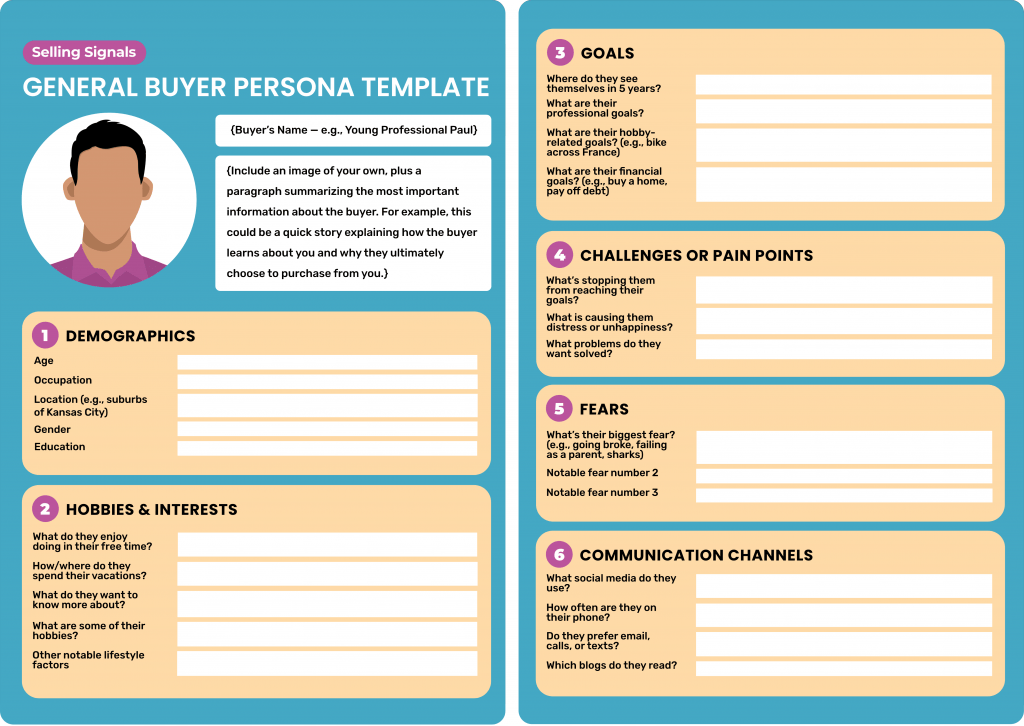
Image source Sellingsignals
For example, if you’re a fitness brand, you might identify a persona like “Active Alex,” a 28-year-old who enjoys high-intensity workouts, follows fitness influencers on Instagram, and prefers plant-based nutrition. Alex is likely to engage with content about workout tips, new fitness gear, and nutrition advice. By understanding the nuances of Alex’s preferences, you can tailor your content strategy to include engaging fitness challenges, influencer partnerships, and informative posts about the benefits of plant-based diets.
These personas help you understand the specific needs, preferences, and behaviors of different audience segments. By leveraging buyer personas, you can ensure that your social media strategy is aligned with the expectations and motivations of your audience, leading to more engaged and loyal customers
3. Get Data from Multiple Social Media Platforms
Using insights from diverse social media channels allows you to create more targeted and relevant marketing campaigns. Each platform attracts different user demographics and behaviors, offering a complete view of your audience.
For instance, while Facebook has a broad user base, Instagram skews younger, and LinkedIn caters to professionals. By analyzing data from various platforms, you can identify trends and preferences unique to each segment, enabling you to tailor content and engagement strategies accordingly.
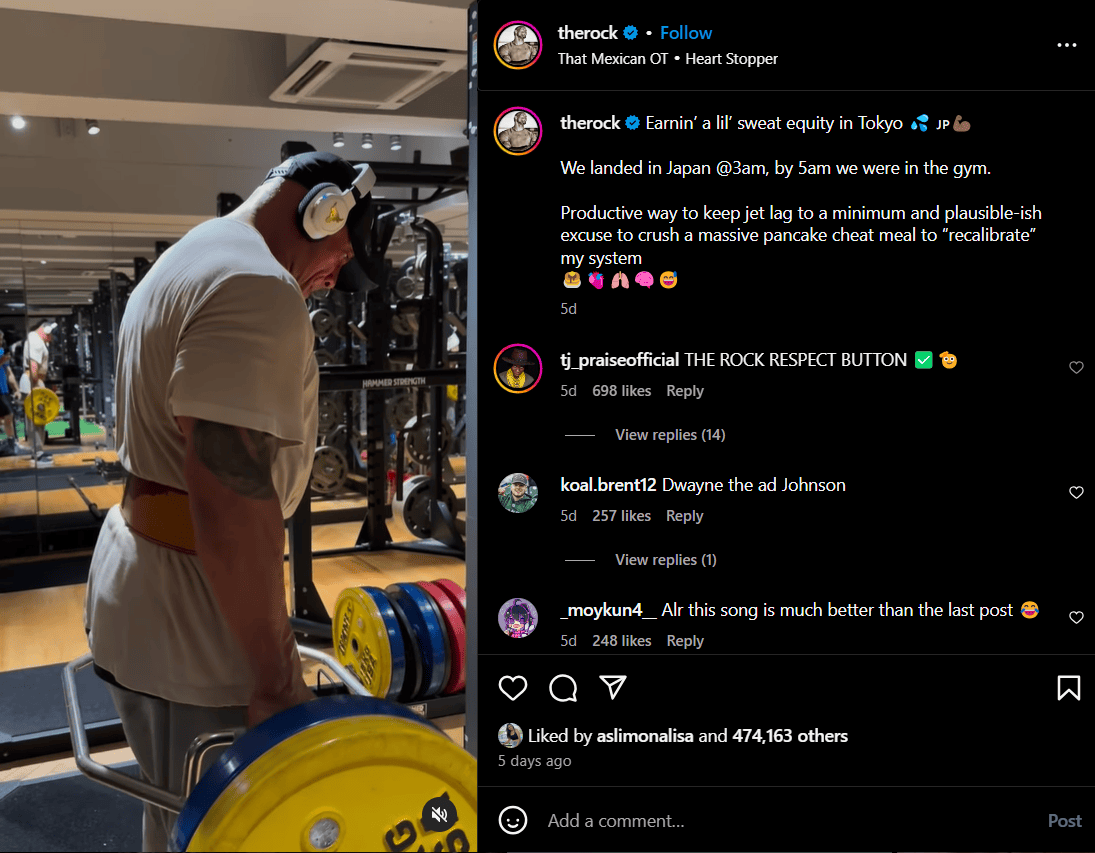
Image source Dwayne “The rock” Johnson Instagram
A great example of using multiple platforms effectively is Dwayne “The Rock” Johnson. On Instagram, he shares a mix of personal life updates, workout routines, and motivational content, appealing to his diverse followers interested in fitness and personal development.
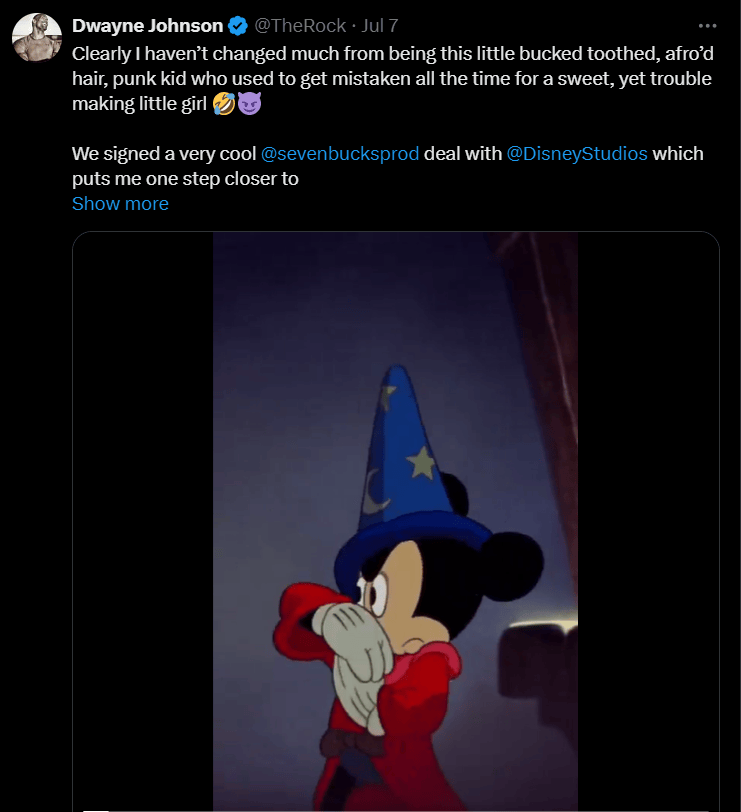
Image source Dwayne “The rock” Johnson Twitter
Meanwhile, on Twitter, he engages more with fans through humorous tweets and quick updates, leveraging the platform’s fast-paced nature. By maintaining distinct types of content across different platforms, The Rock effectively segments his audience and maximizes engagement with his diverse fan base.
4. Use A/B Testing to Post at Different Timings
Posting at optimal times is essential for maximizing engagement on social media, as audiences are active at different hours based on their geographical locations, lifestyles, and platform usage patterns. By conducting A/B testing, you can pinpoint the best times to reach your specific audience segments and enhance your content’s visibility and impact.
You can determine the geographical locations of your audience to understand the time zones you need to consider. Choose a sample piece of content and schedule it to be posted at different times of the day over a set period. For instance, you might post once in the morning, once in the afternoon, and once in the evening to see which time gets the most engagement.
After this, track the performance of each post in terms of likes, comments, shares, and clicks. This data will help you identify which time slots yield the highest engagement rates. Consider using a spreadsheet to compare the metrics for clarity. Once you identify the most effective posting times, adjust your social media schedule to align with these periods.
5. Segment by Lifecycle Stage
The customer lifecycle typically includes stages such as awareness, consideration, conversion, retention, and loyalty. By identifying where each audience segment is in this journey, you can deliver targeted content that addresses their current challenges and guides them toward the next stage.
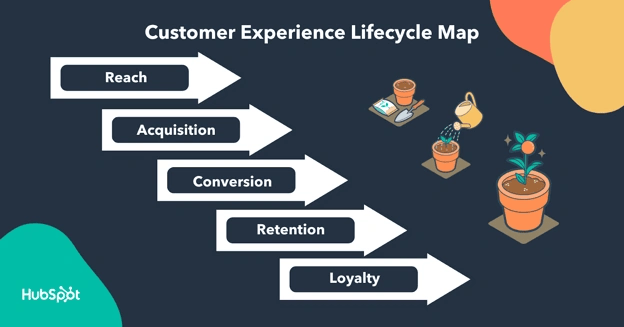
Image source Hubspot
For instance, potential customers in the awareness stage benefit from educational content. For a clothing brand, this could involve creating content that showcases the latest fashion trends or style guides. You can share engaging visuals, such as high-quality images and short videos on platforms like Instagram and Pinterest, to capture attention and introduce your brand to new audiences.
Similarly, those in the consideration stage respond better to detailed product comparisons or testimonials. A clothing brand can create content that highlights the unique qualities of its products, such as sustainable materials or exclusive designs. Influencer collaborations and customer testimonials can be particularly effective at this stage, as they provide social proof and build trust.
This targeted approach not only improves customer satisfaction but also enhances overall marketing efficiency and effectiveness.
6. Leverage Social Listening
61% of businesses today leverage social listening. Social listening is a powerful tool for segmenting social media audiences. It allows brands to monitor conversations and analyze trends to gain valuable insights into audience preferences and behaviors. By tracking discussions around specific keywords, hashtags, and brand mentions, businesses can identify emerging interests and sentiment shifts among their audience.
This information enables marketers to create audience segments based on real-time data, tailoring content and messaging to address the specific needs and preferences of each segment. For example, if social listening reveals a growing interest in sustainability, a brand can develop targeted campaigns that highlight its eco-friendly practices, effectively engaging the interested audience segment.
7.Analyse Competitor Strategies
Examining your competitors’ activities can give you insights into their segmentation tactics, content strategies, and engagement techniques. Look at the content types they use, how often they post, and their audience engagement levels. This analysis helps identify gaps in the market that your brand can fill and opportunities for differentiation.
For instance, suppose a competitor is effectively targeting Gen Z on platforms like TikTok and Instagram with trendy, short-form videos that focus on tech innovations and interactive features.
In that case, your brand might explore targeting Millennials and Gen X on Facebook and LinkedIn with in-depth articles and webinars highlighting expertise in technology trends and their practical applications. Alternatively, you could emphasize unique aspects of your customer service, such as 24/7 support or personalized consultations, to stand out in a crowded market.
8. Use Analytics Tools
To effectively use analytics tools for audience segmentation on social media, consider leveraging both native and dedicated tools.
Native tools, like Facebook Insights and Twitter Analytics, offer basic but valuable insights into audience demographics, engagement metrics, and content performance. They allow you to see which types of content resonate most with your audience and when they are most active.
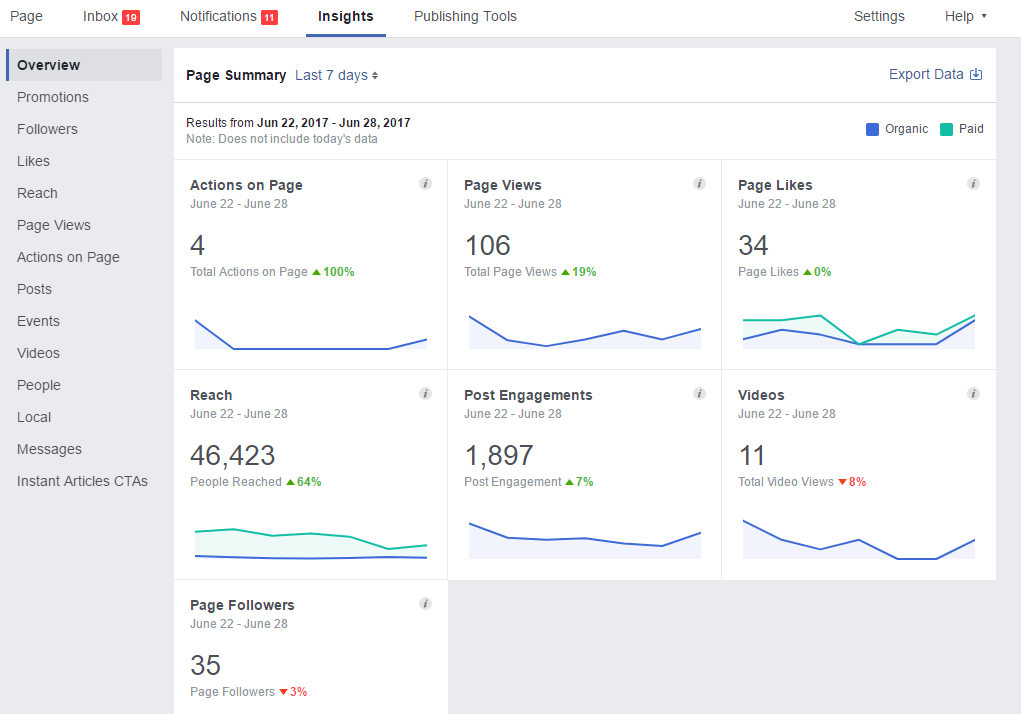
Image source Tinuiti
For more advanced analytics, consider investing in dedicated tools like Hootsuite or Sprout Social. These tools provide deeper insights and more robust data visualization options. These platforms can integrate data from multiple social media channels, giving you an exhaustive view of your audience’s behaviors and preferences.
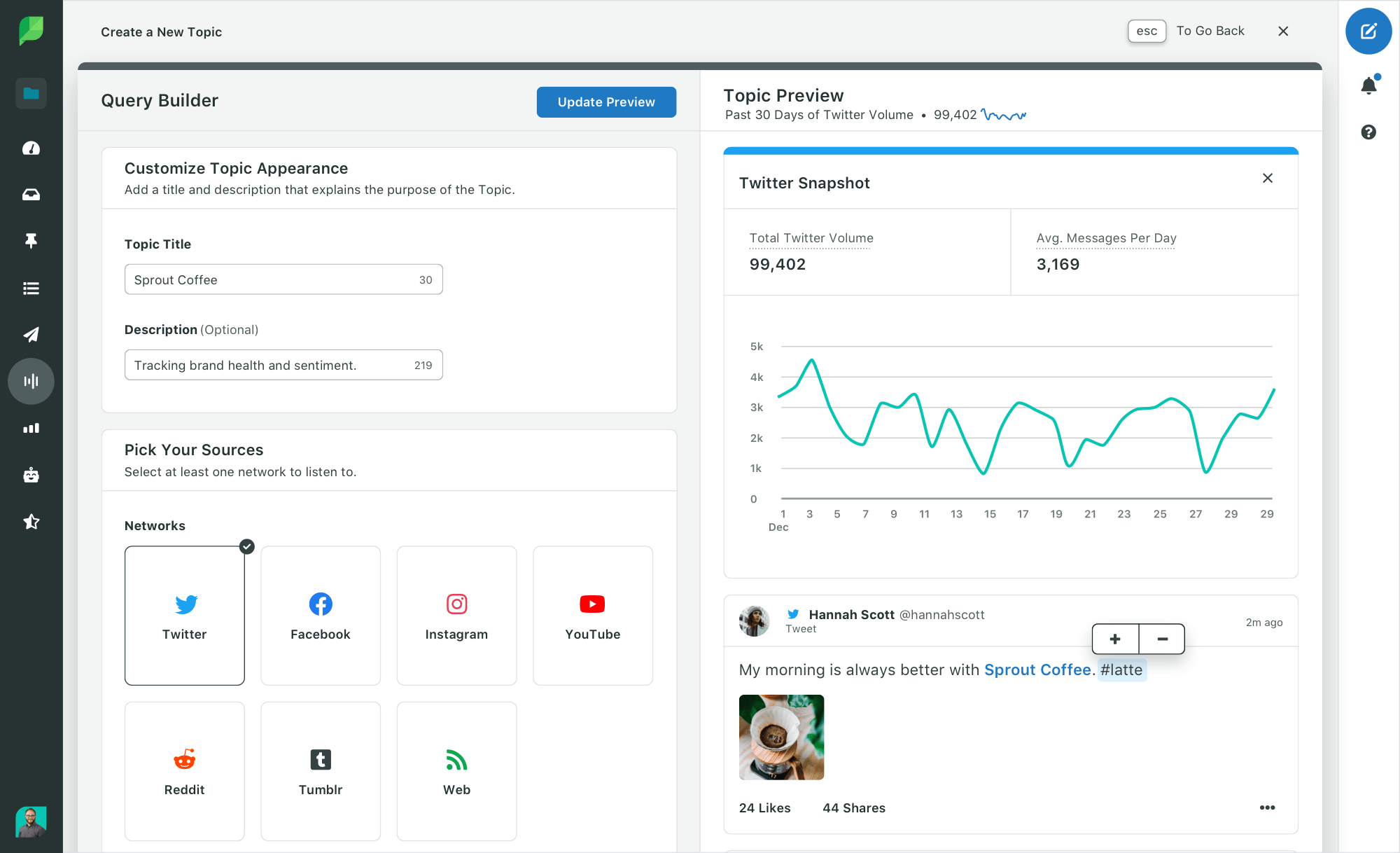
Image source Sproutsocial
By analyzing these insights, you can tailor your social media strategies more precisely, ensuring your content reaches the right segments at the right time.
9. Continuously Evaluate and Adjust
Continuous evaluation and adjustment are crucial for maintaining effective social media audience segmentation. As your audience’s preferences and behaviors evolve, your segmentation strategy must adapt to remain relevant and effective.
Regularly reviewing the performance of your social media campaigns and the engagement levels of different segments allows you to identify areas for improvement and make necessary adjustments.
For instance, if analytics show a decline in engagement from a particular segment, it may indicate that your content is no longer resonating with that audience. In response, you can experiment with different content formats, messaging, or targeting strategies to re-engage them.
Additionally, staying informed about industry trends and shifts in consumer behavior can help you anticipate changes in your audience’s needs and preferences, allowing you to proactively update your segmentation strategy.
Transform Your Reach: Mastering Audience Segmentation
Using the power of social media audience segmentation can transform your marketing strategy and drive significant results for your brand. Here’s how to effectively use the insights you gather:
- Tailor Content: Create personalized messages that speak directly to the needs and interests of each segment.
- Optimize Timing: Use insights to post when your audience is most active for maximum engagement.
- Enhance Engagement: Focus on building relationships by responding to segment-specific preferences and feedback.
- Refine Strategies: Continuously test and adjust your approach based on real-time data to stay ahead of trends.
These insights will help you create more meaningful interactions and foster stronger connections with your audience. Ready to elevate your social media strategy? Start applying these techniques today and watch your brand thrive!





